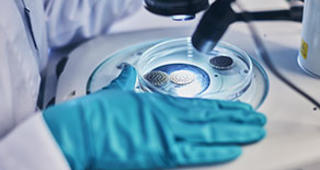Aerated lagoons are used extensively for the treatment of both municipal and industrial wastewater.
Overview
Enhancement and upgrading of aerated lagoons
Aerated lagoons are used extensively around the world for treatment of both municipal and industrial wastewaters. In North America, thousands of larger lagoons treat municipal wastewater. These systems can efficiently remove COD and BOD but nitrification is not readily accomplished during the cold season.
As municipalities with aerated lagoons are increasingly required to limit the release of ammonium to receiving waters they are facing the hard choice of whether to build an expensive all new process or to somehow upgrade the lagoon in order to obtain cold weather nitrification.
Our solution
At AnoxKaldnes we believe that lagoons are simple and have many benefits. So why not let them continue to do what they already do, very economically and efficiently, and possibly more with a little help. Our solution is the AnoxKaldnes LagoonGuard biofilm process upgrade.
Easy and economical
The AnoxKaldnes LagoonGuard biofilm process is a well-designed moving bed biofilm reactor (MBBR), typically after the lagoon, which can be customized to meet BOD and ammonia requirements.
The upgrade is easy and economical, compact and, in the spirit of the lagoon itself, the LagoonGuard process upgrade requires a minimum level of operation and maintenance.
The LagoonGuard process prolongs the usefulness of existing lagoon systems that find themselves under strict new effluent demands.

Benefits
- Enhanced COD and BOD removal and nitrification.
- Extremely small foot-print Compared to an aerated lagoon, the LagoonGuard process uses less than 3 % of the area. Thus, it can easily be incorporated without significantly increasing the area requirements.
- Easy to operate Once a nitrifying biofilm has been established on the carriers, the process needs very little maintenance.
- Efficient ammonium removal More than 95% ammonium removal is easily obtained.
- Sturdy Nitrifiers are frail bacteria that grow slowly, especially at low temperatures. The LagoonGuard process guards the nitrifiers against periodic unfavorable conditions that otherwise may kill them.
Applications
- Pulp and paper mills
- Municipalities
Case: Johnstown, Colorado
The first AnoxKaldnes LagoonGuard was introduced in the city of Johnstown, Colorado, USA. The Johnstown site consisted of a series of three lagoons built in the 1950's. During the winter, temperature drops to less than 5°C, making it impossible to nitrify in the lagoons. New effluent discharge limits required the city to meet ammonia limits year around. The municipality could either abandon the existing lagoon and built a new activated sludge at a very high cost, or it could use what they already had and install a LagoonGuard biofilm process to meet the ammonium limits at a much lower cost.
The decision was made to go with the AnoxKaldnes LagoonGuard process. Today the first two lagoons are used for BOD pretreatment, followed by a two-stage LagoonGuard process, in which the first stage takes care of residual BOD and the second nitrifies. The third lagoon is used as a settling lagoon. The plant was initially installed with a media fill of 26 %. Due to growing population, in 2014 the Johnstown plant was upgraded to a media fill of 52%. The future increase was achieved by simply adding additional carriers to the basins which allowed for a very simple and construction free upgrade.
Case: Bahia Sul, Brazil
The first AnoxKaldnes LagoonGuard biofilm process for the pulp & paper industry was introduced in Bahia Sul during the summer of 2007. The Suzano Bahia Sul plant is one of the major pulp and paper suppliers in Brazil. Suzano was increasing its production of bleached eucalyptus pulp and had to meet new, very strict effluent discharge limits.
A three-stage LagoonGuard biofilm process was installed to upgrade organic removal. Each stage has a media fill of 10 % BiofilmChip™ carrier material.




